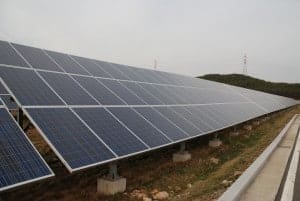
The Department of Energy (DOE) National Renewable Energy Laboratory’s (NREL) new report on “Non-Hardware (‘Soft’) Cost-Reduction Roadmap for Residential and Small Commercial Solar Photovoltaics, 2013-2020,” funded by DOE’s SunShot Initiative and written by NREL and Rocky Mountain Institute (RMI). The NREL’s ongoing project charts a path to achieve soft-cost targets of $0.65/W for residential systems and $0.44/W for commercial systems by 2020 and provides soft-costs benchmarking analysis.
Other non-hardware costs – a soft balance of system or business process costs – include permitting, inspection, interconnection, overhead, installation labor, customer acquisition, and financing.
Permitting and soft interconnection costs may not appear significant when measured in dollars-per-watt, but they pose significant market barriers that slow PV deployment.
“Regardless of the specific path taken to achieve the SunShot targets, [require] the concerted efforts of numerous photovoltaic (PV) market stakeholders,” NREL Solar Technology Markets and Policy Analyst Kristen Ardani said. “This report illustrates how the required participation of each type varies substantially by soft-cost-reduction category while noting that roles and responsibilities will be complementary and evolve.”
“Soft costs are the majority of costs for residential solar and a large minority for commercial PV projects. In recent years, they have remained stubbornly high despite impressive hardware-costs reductions,” said program director at Rocky Mountain Institute, Jon Creyts. “Aggressive soft-cost-reduction pathways must be developed to achieve the SunShot Initiative’s PV price targets.”
Fifty percent of total installed residential solar costs are soft costs, as are more than 40 percent of commercial solar costs.
Overcoming market barriers and decreasing costs are vital across four key areas: customer acquisition, permitting, inspection, interconnection; installation labor; and financing. The NREL report identifies residential installation labor and permitting, inspection, and interconnection as facing the most uncertain near-term paths toward roadmap targets.
The NREL roadmap adepts proven methodologies from the semiconductor and silicon PV industries. Interviews with solar industry soft-costs experts and extensive market analysis identify specific cost reduction opportunities.
Read more here




